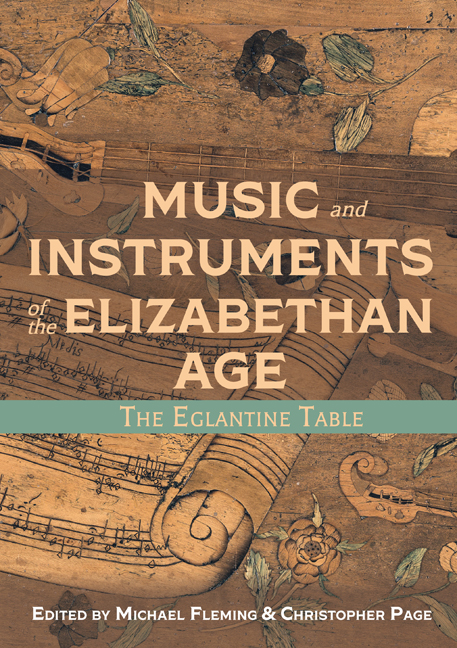Book contents
- Frontmatter
- Dedication
- Contents
- List of Illustrations
- Foreword
- Acknowledgements
- Note to the Reader
- List of Abbreviations
- Introducing the Eglantine Table
- Part I Silent Things
- Part II Music and Instruments
- Part III Broader Views of the Eglantine Table
- Appendices
- Glossary
- Bibliography
- List of Contributors
- Index
- Plate section
9 - The Gittern or Guitar
Published online by Cambridge University Press: 24 March 2021
- Frontmatter
- Dedication
- Contents
- List of Illustrations
- Foreword
- Acknowledgements
- Note to the Reader
- List of Abbreviations
- Introducing the Eglantine Table
- Part I Silent Things
- Part II Music and Instruments
- Part III Broader Views of the Eglantine Table
- Appendices
- Glossary
- Bibliography
- List of Contributors
- Index
- Plate section
Summary
The guitar has always been the jester in the community of Western musical instruments: welcome for a time, at least in a festive context, but not for too long, and rarely turned to for anything of enduring value. It is somehow the essence of the guitar to be so, throughout its history, and few works of art capture that quality more poignantly than the Eglantine Table. There, a decidedly plain-looking guitar is denied admission to frieze A, where some instruments of unimpeachable status, and ornate appearance, such as the lute and harp, lie beside those with more mixed reputations in their day, including the violin and cittern (Plate 2). Instead, the guitar must be content with frieze C, an area of the Table dominated by gaming boards – the equipment for pastimes whose value to both prince and pauper was sharply contested during the Tudor period and beyond, as Patrick Ball shows in Chapter 3. Nor is there any document of musical notation shown near the guitar. Yet there is, nonetheless, a guitar on the Table, and its presence there is a reminder of the instrument's ambiguous position at the point where written and unwritten traditions of music negotiated with each other, where the instrument could be strummed on the streets at one moment and played like a lute the next, making appropriately sophisticated music.
The gittern shown on the Eglantine Table stands very close to the beginning of the guitar's history in England (Plate 6). Known as the guiterne or guiterre in France and the ‘gittern’ in England, the guitar became fashionable towards the middle of the sixteenth century throughout Western Europe. The earliest printed tablature for the four-course instrument – the predominant form of the guitar before approximately 1600 – appears in Tres libros de musica en cifras para vihuela by Alonso Mudarra, published at Seville in 1546, and a decade later an anonymous French commentator declared that ‘everyone has been playing the guiterne now for about twelve to fifteen years’, placing the beginnings of the fashion in France very close to the date of Mudarra's book.
- Type
- Chapter
- Information
- Music and Instruments of the Elizabethan AgeThe Eglantine Table, pp. 137 - 148Publisher: Boydell & BrewerPrint publication year: 2021

